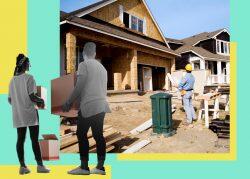Short supply, rising prices and now — uncompromising buyers.
The latest trend to emerge from the pandemic is a preference for renovated homes over budget-friendly fixer-uppers among Manhattan buyers, a new report indicates.
Real estate data firm UrbanDigs found that the gap in sales prices between fresh-faced apartments and those requiring work has widened by nearly 30 percent in the last year, the second-largest such divide in a decade.
As demand for units in mint, move-in condition pushed prices to new highs — up nearly 14 percent to $1.25 million from a pandemic low of $1.1 million — sales prices for unrenovated apartments, such as estate sale units, have stagnated. During the same period, the cost of a fixer-upper rose just over 1 percent.

Homebuyers prefer the “ease and certainty of a remodeled unit” over the headache of a project, UrbanDigs’ co-founder John Walkup reasoned.
In Manhattan, buildings often limit the number of concurrent construction projects and the size of work crews, tacking on heavy fees for projects that extend beyond agreed deadlines, Walkup said. That’s on top of the rising costs of construction due to material and labor shortages.
Buyers dreaming of a steal risk winding up with a pricey project that turns into a time suck — an endeavor pandemic-worn bargain hunters would rather do without.
“Buyers are willing to spend an additional $100,000 to 200,000 to purchase a fully renovated home, in order to spare themselves from having to take on the timeless, stressful process of doing a renovation,” said Ted Karagannis, a broker with Warburg Realty.
In part, the decision is being driven by second-home buyers looking in New York who are largely unwilling to compromise on a finished unit.
“We’ve had more pied-à-terre sales this year, by far, than we’ve ever had,” George Case, another Warburg agent, said. “Their mind is set on finding something that needs no work — it’s a no-fuss transaction. They’ll usually pay more for renovated units, but will compromise on size, maybe location.”
Continued remote work means many buyers, using their new homes full-time, can’t afford the daily disruption of renovation work, Karagannis added.
The firm pulled data from the RLS and property records using a proprietary algorithm to identify and track each apartment category.
A caveat of the data is its sample size. While UrbanDigs pulled the average sale price of 3,800 renovated apartments, the study identified the average sales price of only 437 unrenovated apartments.
By comparison, there are 8,125 Manhattan apartments listed for sale on StreetEasy.
Read more


